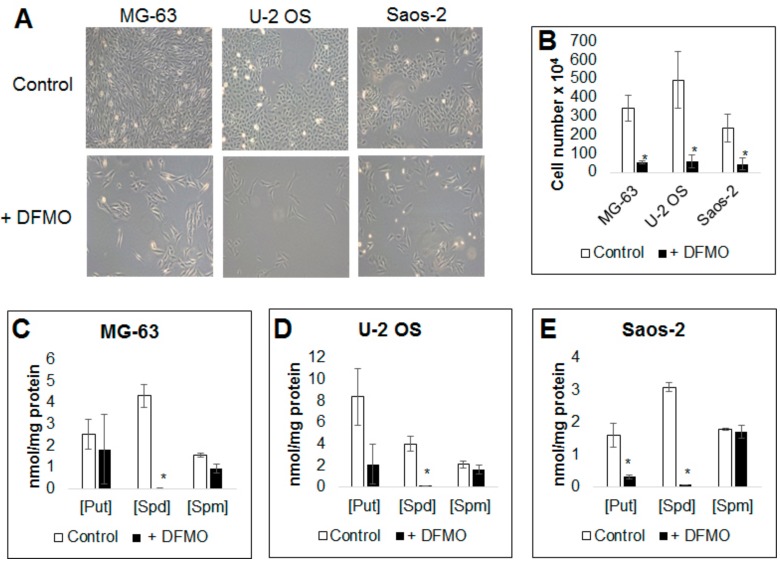Figure 1.
Effects of polyamine inhibitor alpha-difluoromethylornithine (DFMO) on tumor cell growth and polyamine profile of human osteosarcoma (OS) cells. (A) Representative light micrographs of MG-63, U-2 OS and Saos-2 cells grown in the presence or absence of 5 mM DFMO for six days. Light micrographs were routinely taken with a Leica (Wetzlar, Germany) DMi1 light microscope to document most of the experiments throughout this study and the pictures are representative of 5 separate experiments (N = 5); (B) viable cells were counted with a hemocytometer and trypan blue after 6 days of 5 mM DFMO exposure. DFMO treatment drastically reduced cell number in all cell lines; (C–E) levels of intracellular polyamines putrescine (Put), spermidine (Spd) and spermine (Spm) were measured by high-performance liquid chromatography (HPLC) in OS cells after exposure to 5 mM DFMO for six days. DFMO treatment resulted in a consistent decrease of putrescine and spermidine levels in all cell lines. Putrescine levels were more variable, however, trended toward decreased concentration in all cell lines and were significantly decreased in Saos-2 cells. Spermine levels were essentially unchanged, which is not uncommon and found also after DFMO treatment of neuroblastoma and other tumor cell lines [16]. Data represents three independent experiments (N = 3). * denotes statistically significant changes compared with control (p < 0.05).

